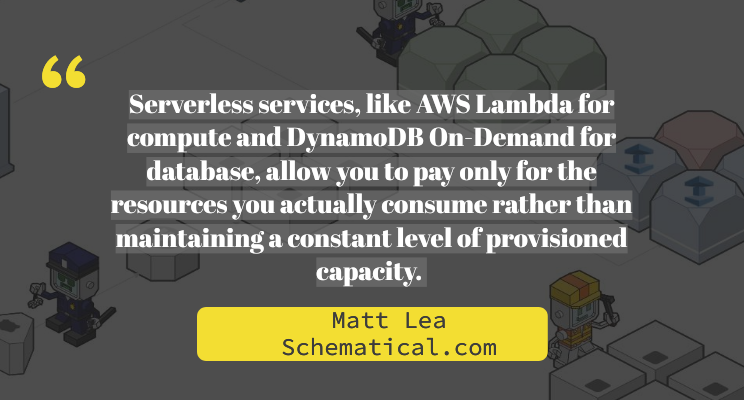🧐 Have you been considering a move to serverless computing to help rein in your AWS expenses?

If you're not yet familiar with this approach, here's a quick primer.
Serverless services, like AWS Lambda for compute and DynamoDB On-Demand for database, allow you to pay only for the resources you actually consume rather than maintaining a constant level of provisioned capacity.
This can be an absolute game-changer for applications with variable or unpredictable workloads, such as web servers, asynchronous workers, and even some databases.
By shifting to a serverless model where it makes sense, you can dramatically reduce your overall spend and improve your application's ability to scale up or down seamlessly in response to changes in demand.
Plus, you'll free up your team from the burden of managing and optimizing all that infrastructure yourselves.
Sounds pretty appealing, right?
But of course, serverless isn't a one-size-fits-all solution, and there are certainly some tradeoffs to consider.
That's why I want to hear from you - what questions or concerns do you have about adopting serverless in your own environment?
Have you experimented with it already, and if so, what benefits or challenges have you encountered?
Share your thoughts and experiences in the comments, and let's dive deeper into how serverless could help you build a leaner, more agile AWS environment.